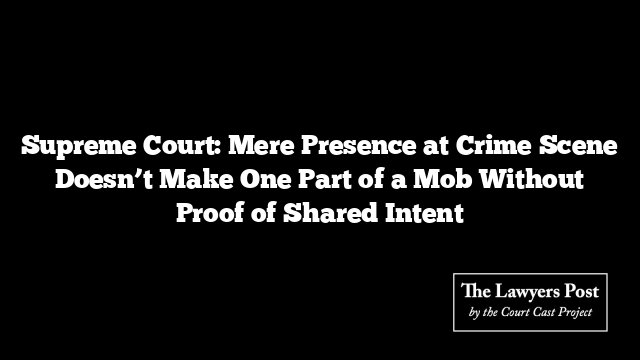In a ruling that sharply distinguishes between guilt and proximity, the Supreme Court has held that simply standing near a violent mob does not make someone part of it unless it’s proven that the person shared the group’s unlawful purpose.
The bench of Justices JB Pardiwala and R. Mahadevan delivered this clarification while acquitting ten men convicted over a 1988 communal clash in Bihar’s Katihar district. The Court found no credible evidence showing that the accused shared the “common object” of the mob charged under Sections 148, 149, 307, and 302 of the Indian Penal Code.
“Mere presence at the scene does not automatically render a person a member of the unlawful assembly,” the Court observed. “Unless there is proof that the accused shared its common object, a mere bystander cannot be dragged within the net of Section 149 IPC.”
To determine whether someone was a passive onlooker or an active participant, the Court outlined a set of guiding factors — including the place and time of the assembly, the conduct of members, the motive behind the crime, the weapons used, and the overall sequence of events. These, the Court said, help distinguish between mere presence and shared intent.
Justice Pardiwala, writing for the bench, cautioned that courts must tread carefully in cases involving large mobs. Evidence against each accused, the Court said, must be examined with “utmost care” to prevent punishing innocent spectators for acts they neither supported nor committed.
Reaffirming the principle from Masalti v. State of Uttar Pradesh (1964), the judgment emphasized that convictions in mob-related cases should rest on the consistent testimony of at least two or three trustworthy witnesses, rather than vague or sweeping allegations.
The Court ultimately ruled that the prosecution’s case was too general and unsupported to prove the accused shared the mob’s murderous intent — leading to their acquittal.





